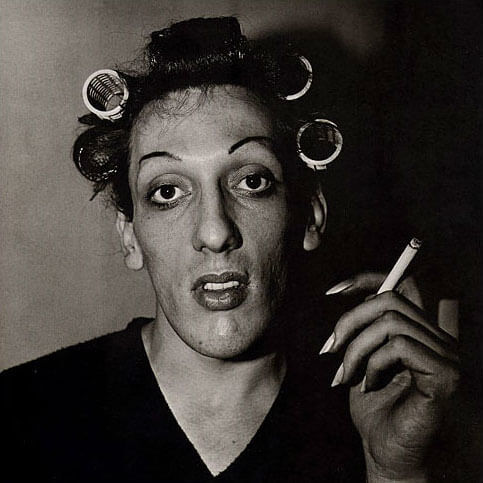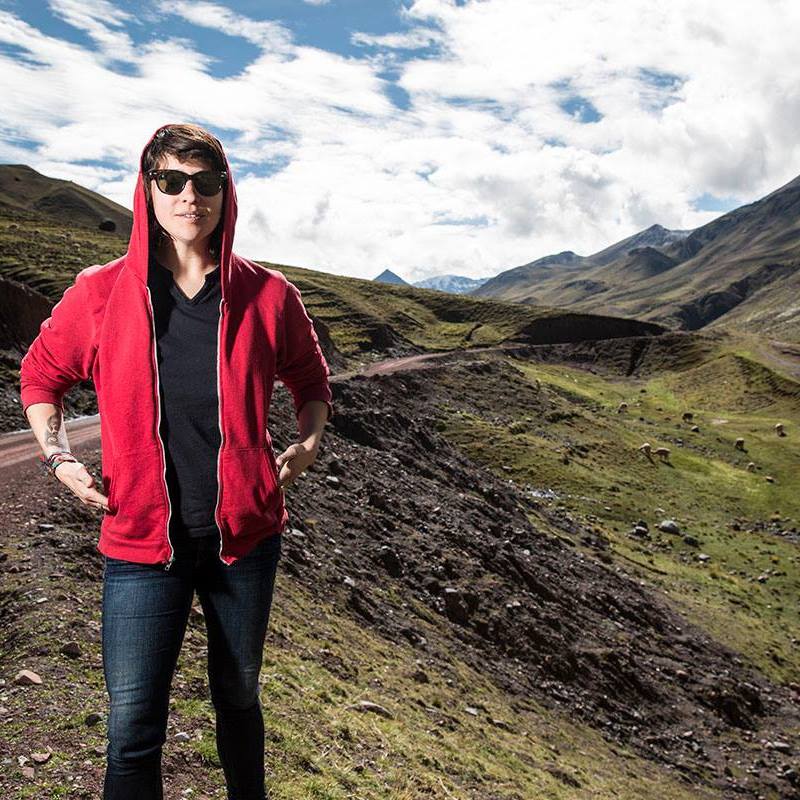Karolina Wojtasik works in New York, Los Angeles and across the globe. Most recently she shot her signature portrait series in Siberia, Africa, and India. She specializes in Portraits, Entertainment, Advertising and commissioned photography. Her work has been featured in key art campaigns for leading television networks and magazines. She has photographed countless celebrities and her portraits are featured in high-end personal collections. In 2012, she was selected to show her “India” series at the world renowned Art Basel in Miami and was featured in a solo show with Gallery I/D. Her work is part of a permanent collection at the prominent Martin Z. Marguilies Collection in the Wynwood Art District in Miami. Karolina graduated from the International Center of Photography. Born in Warsaw, Poland, she resides in Brooklyn, NY.
What is your background?
I was born in Warsaw, Poland in 1982, I came to Brooklyn, NY in 1987 leaving communist Poland behind with my mother.
Coming from a family of physicians I started my schooling in medicine soon to realize it was not for me and photography was my true calling. As a teen and young adult, I found solace and comfort in the dark room, the ability to create imagery that could speak to people and tell a story grabbed my heart and imagination. I quickly transferred to the International Center for Photography in NYC and started my career in photography.
What kind of photography do you most identify with?
I’ve always identified with documentary photography, at 13 my photography/Art teacher noticed my borderline obsession with photography, she gave me my first copy of Diane Arbus’s book, since that moment I’ve strived to create groundbreaking documentary imagery.
Explain your style in 100 words
My style really involves multiple layers. As for the technical aspect of my documentary photography, I like to bring studio style lighting to remote outdoor locations all over the world. In regards to subject and connecting with them, I spend a long period of time with them. For my Runi Simi series, I would stay in a lot of the local villages and see what develops.
How did your style change over time?
For my first documentary travel series in India and Nepal, I covered everything myself. As my work and I have matured I’ve fine tuned my lighting and I have got a system. The key is never stop developing and growing your craft.
What photograph left a lasting impression on you and why?
Diane Arbus’s image of a transgender woman in hair curlers and a cigarette. I came across this image at a very young age, why it’s left such a lasting impression is layered. Arbus had an ability like no other, it seemed she found her subjects “true self” and exposed it. What I mean by true self is on some level their soul, she shot marginalized people in society and found their beauty. Arbus is one of the main reason’s I do what I do.

When did you discover your passion for photography?
My passion was discovered at around 12 years old, I built my first camera out of an oatmeal can. I lived in the darkroom, I had a very difficult and abusive childhood so my safe place was the darkroom.
Describe a real-life situation that inspired you?
As a child, I had a very inspirational aunt, my great aunt Mimi… Some of my first early work was documenting her extravagant lifestyle in the upper east side of manhattan. My great aunt Mimi passed away with me in India on one of my documentary journeys. She always told me you have to take what you want in this life especially as a woman in a men’s industry never be afraid of getting what you want.
What’s your most embarrassing moment related to photography?
My most embarrassing moment probably was in Alaska, I was shooting season 1 marketing campaign for History Channel’s “Mountain Men”. It was during the beginning of a pretty intense snow storm, I was setting up my shot next to one of the characters plane and I walked directly into the wing of the plane as I was looking down at my camera. Full bloodied face swollen eye, I finished the shoot for that day and then got stitched up by the talents neighbor… very memorable.
What jobs have you done other than being a photographer?
I’ve always been a photographer.
What is your dream project?
Taking 6 months to a year traveling the entire world connecting with humanity and documenting it.
Name 5 photographers who have inspired you
-Diane Arbus
-Sally Mann
-Bruce Davidson
-Philip-Lorca diCorcia
-Ralph Eugene Meatyard
What would you do without photography?
I think my life would have very little purpose, photography isn’t just my job it’s my identity and it has been for a very long time.
How do you know when a body of work is finished?
It’s usually the last frame I take, sometimes I even have more days more options but I just take my last frame and I know. In Peru I came across an older woman in her late 70s she was herding her llama and I set up my B1’s and talked with her for awhile I took one frame of her and I just knew that is the completion of this series, that’s it.
Is there one photograph of yours that you are very proud of? Why?
I’m very proud of my image of the young girl sitting on a mountain top in Peru very close to her village that mainly works in ancient textile techniques. It’s gotten a lot of positive feedback from colleagues and fans.
What is your most important gadget? Is there something you can’t live without in your studio?
My Canon Mark III is my workhorse it’s really been all over the world with me, that being said the Profoto B1’s have really elevated my craft, they are small yet powerful and the lithium batteries really last which is critical in the obscure places I end up.
How did you start taking pictures? Why do you take pictures?
As I mentioned earlier I had a very strained childhood and I found solace and comfort in photography. As a child, I felt I lived in a world filled with criticism and anger, by picking up a camera I somehow took back control of that uneasy feeling. I take photos because I truly think it’s what I’m here to do.
What was your first camera?
My first camera was a Canon AE-1 but I soon realized I was more attracted to medium format and moved on to the Mamiya 6MF (that I still currently use)
What camera do you use now and why?
I currently have a three camera setup when I’m out on personal documentary projects:
-Canon Mark III: The canon is my workhorse, I’ve been all over the world with this camera and it really always comes through along with several of my L-series lenses it gets the job done
-Sony Alpha 7rii: This has been a new addition to my kit, with a bit more pixels and advanced wifi technology the Sony has come handy especially on the road. Especially with it’s impressive ISO capability and the addition of the metabones adaptor allows for L-Series Canon lens mounting on the Sony E-Mount. This always for a lean second camera on my kit without the need for additional lenses.
-Mamiya 6MF: Call it nostalgia but at times I will still travel with my Mamiya and a couple packs of 120 film, I still love the smell of opening a fresh roll of 120.
What role does the photographer have in society?
As a photographer we get to be humanities voice through imagery and that’s a powerful thing.
If you want to get in touch with Karolina, check out her website here.

